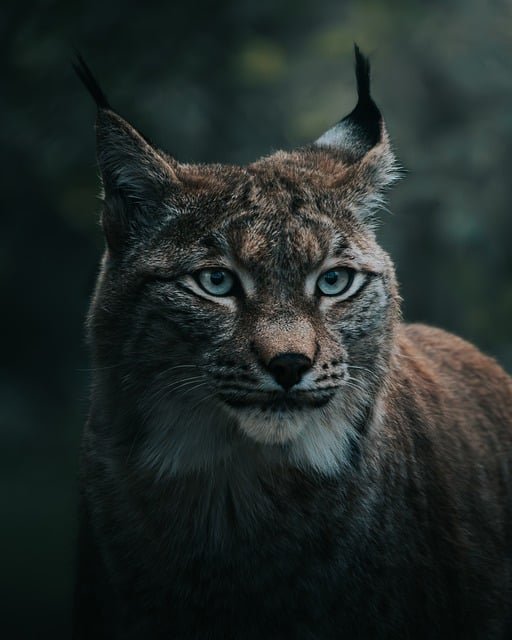Whiskers in the Wild: The Fascinating World of Jaguarundi Cats
The enigmatic jaguarundi, a small wild cat native to the Americas, captivates wildlife enthusiasts with its unique appearance and elusive nature. Often overlooked in favor of its more famous relatives like jaguars and ocelots, the jaguarundi boasts a rich history and intriguing behaviors that deserve our attention. From its unusual vocalizations to its remarkable adaptability, this feline species offers a wealth of surprises for those willing to explore its world.

Habitat and Range: From Rainforests to Deserts
One of the most remarkable aspects of the jaguarundi is its incredible adaptability to diverse environments. These resilient cats can be found in habitats ranging from dense tropical rainforests to arid scrublands. Their range extends from southern Texas and Arizona in the United States all the way down to northern Argentina. This wide distribution has led to fascinating regional variations in behavior and diet, as jaguarundis adapt to local conditions and available prey.
Unusual Vocalizations: A Feline Symphony
While many wild cats are known for their roars or growls, jaguarundis possess a surprisingly diverse vocal repertoire. These cats can produce over 13 distinct vocalizations, including chirps, whistles, purrs, and even bird-like tweets. This extensive range of sounds plays a crucial role in communication between individuals, particularly during mating seasons. Researchers believe that the jaguarundi’s unique vocalizations may have evolved as a way to navigate their varied habitats and communicate over long distances.
Hunting Techniques: Masters of Stealth
Jaguarundis have developed impressive hunting strategies that set them apart from other wild cats. Unlike many felines that rely on ambush tactics, these cats are active hunters, often pursuing prey for extended periods. Their long, sleek bodies allow them to move swiftly through dense vegetation, while their exceptional climbing abilities enable them to hunt both on the ground and in trees. Interestingly, jaguarundis have been observed using their paws to scoop fish out of shallow water, showcasing their adaptability and intelligence as predators.
Conservation Challenges and Future Prospects
Despite their wide range and adaptability, jaguarundis face numerous threats in the wild. Habitat loss due to deforestation and agricultural expansion remains the primary concern for conservationists. Additionally, these cats often come into conflict with humans when they prey on small livestock, leading to retaliatory killings. Current conservation efforts focus on habitat preservation and creating wildlife corridors to connect fragmented populations. Some innovative projects are exploring the use of guard dogs to protect livestock, reducing human-jaguarundi conflicts without resorting to lethal measures.
The Jaguarundi in Indigenous Cultures
Throughout their range, jaguarundis have played significant roles in the folklore and traditions of indigenous peoples. In some Amazonian cultures, these cats are believed to possess mystical powers, capable of shape-shifting and guarding the secrets of the forest. Ancient Mayan artifacts depict jaguarundis alongside other revered animals, suggesting their importance in pre-Columbian societies. Today, efforts to conserve jaguarundis often involve collaborating with indigenous communities, combining traditional knowledge with modern conservation techniques to ensure the species’ survival.
Jaguarundis in Captivity: Challenges and Opportunities
While jaguarundis are not commonly found in zoos, a small number of facilities house these intriguing cats as part of conservation and education programs. Caring for jaguarundis in captivity presents unique challenges due to their active nature and specific dietary needs. However, these programs offer valuable opportunities for research and public education. Some facilities have successfully bred jaguarundis in captivity, contributing to our understanding of their reproductive behaviors and potentially aiding future conservation efforts.
The Future of Jaguarundi Research
As technology advances, new opportunities arise for studying these elusive cats in the wild. Remote camera traps and GPS collars are providing unprecedented insights into jaguarundi behavior and movement patterns. Genetic studies are revealing the complex relationships between different populations, helping conservationists develop more targeted protection strategies. Future research may focus on the jaguarundi’s role in ecosystem health, their adaptability to climate change, and potential undiscovered behaviors in remote habitats.
In conclusion, the jaguarundi represents a fascinating and often overlooked member of the wild cat family. From their unique vocalizations to their remarkable adaptability, these small but mighty felines continue to surprise and intrigue researchers and wildlife enthusiasts alike. As we deepen our understanding of jaguarundis, we not only uncover the secrets of a remarkable species but also gain valuable insights into the complex ecosystems they inhabit. The future of jaguarundi conservation holds both challenges and opportunities, promising exciting discoveries and the potential to ensure these captivating cats continue to thrive in the wild for generations to come.





